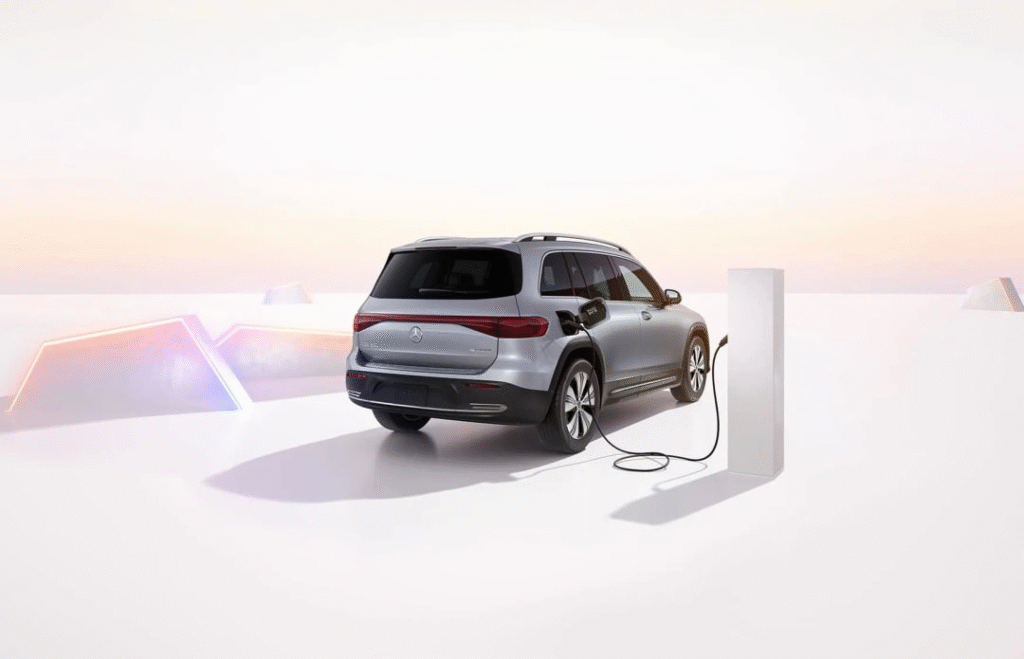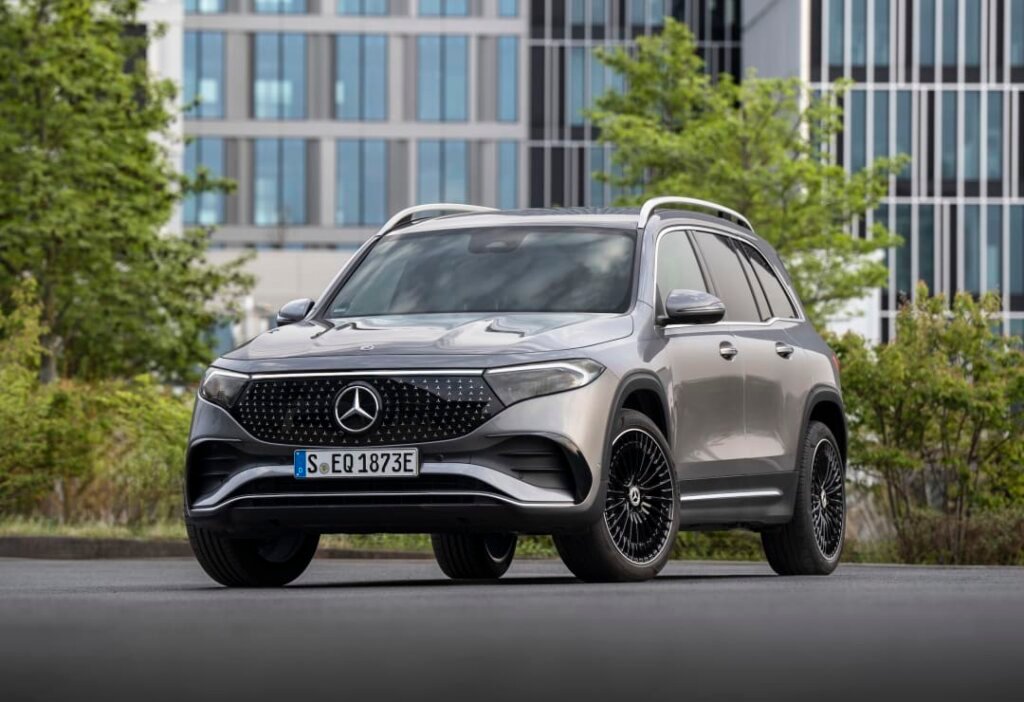Mercedes-Benz Discontinues Its Smallest Three-Row Electric Crossover, the EQB, Paving the Way for a Next-Gen Electric GLB
Mercedes-Benz has officially confirmed the discontinuation of its current EQB crossover, with the model slated to exit the U.S. and Canadian markets after model year 2025. This decision, while a significant change, comes as little surprise to industry observers, as the current EQB was based on an older platform, making it somewhat “outdated the moment it was launched.” However, the concept of a compact electric seven-seat crossover from Mercedes-Benz is far from dead; it’s simply evolving into a more advanced, next-generation offering.

End of an Era for the EQB, But Not for the Segment
The EQB held a unique position in Mercedes-Benz’s electric lineup.
- Official Confirmation: “The EQB has reached the end of its planned lifecycle and therefore will not be offered in the U.S. or Canada after model year 2025,” a Mercedes spokesperson confirmed to InsideEVs, following earlier reports by Jesmb.de about its removal from the German online configurator.
- Unique Offering: The EQB was Mercedes-Benz’s sole electric seven-seat crossover and one of only two three-row electric SUVs offered by the brand (the other being the larger EQS SUV).
- Nameplate Only: Crucially, the discontinuation affects only the current EQB nameplate and its underlying architecture, not Mercedes-Benz’s commitment to electric compact SUVs.
New SUVs on Advanced Architecture: The Electric GLB is Coming
Mercedes-Benz is set to introduce two new SUVs built on its cutting-edge Mercedes-Benz Modular Architecture (MMA) platform. This advanced framework is designed to support both hybrid combustion and sophisticated 800-volt EV systems.
- Part of a Larger Offensive: This initiative is part of a massive rollout of 18 new models by 2027, starting with the new CLA.
- EQB Replacement: One of these new SUVs will be the electric replacement for the combustion-powered GLB. This new model is expected to carry a “with EQ Technology” variant, effectively stepping in to fill the void left by the EQB. This signifies a strategic shift, where both electric and combustion versions of new Mercedes vehicles will share very similar styling and technology.
- Unified Design Philosophy: This strategy marks a departure from Mercedes’ earlier approach, where electric models like the EQS and EQE were intentionally given a distinct “alien” design. The original idea was to appeal to early EV adopters who wanted their cars to stand out. However, as EV sales evolve beyond early adopters, Mercedes now intends to unify its styling across all powertrains, with the key differences residing “under the skin.” This approach mirrors that of rival BMW (e.g., 5 Series and i5, 7 Series and i7), a strategy that has proven successful for the Bavarians.

Vastly Improved Performance and Charging Capabilities Expected
The transition to the new MMA platform promises significant enhancements in performance, range, and charging speed for the upcoming electric GLB.
- Outdated Foundation: The current EQB, introduced in 2021, was built on the older Modular Front-Drive Architecture (MFA) platform, originally designed in 2011 for combustion vehicles. This limited its electric performance.
- The current EQB offered a range of 205-251 miles from a 70.5-kilowatt-hour battery.
- It accepted a maximum of 100 kW from a DC fast charger, taking approximately 35 minutes to charge from 10-80% under ideal conditions.
- Next-Gen Improvements: The new GLB EV, leveraging the MMA platform, is projected to deliver:
- A significantly improved range, likely in the region of 400 miles.
- Much faster charging capabilities. While specific figures for the GLB EV are pending, the CLA built on the same platform boasts 320 kW charging and a 10-80% charge time of just 22 minutes.
- A larger usable battery capacity of 85 kWh.
- Enhanced Appeal: These substantial improvements in range and charging speed, combined with styling that is expected to be more aligned with popular models like the all-new GLC, are anticipated to significantly boost buyer appeal for Mercedes-Benz’s next-generation compact electric crossover.
Also Read – Rolls-Royce Phantom V12 2006 for Sale: Unbelievable Luxury Under $60K, Cheaper Than New BMW 5 SeriesMeta




Pingback: Tesla New Affordable EV Arriving Tomorrow: Expected Under $40,000, Will It Compete In Crowded Market? - Mechhelp